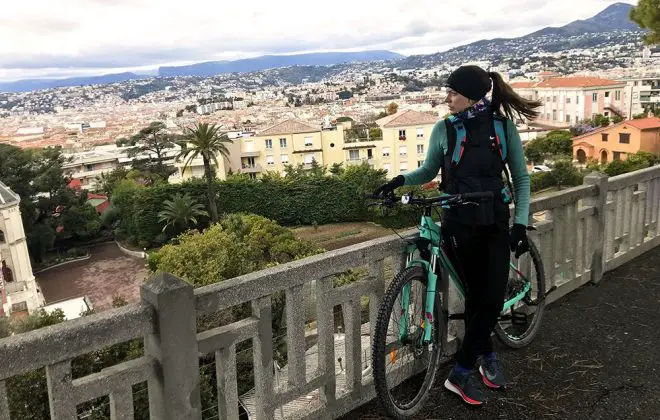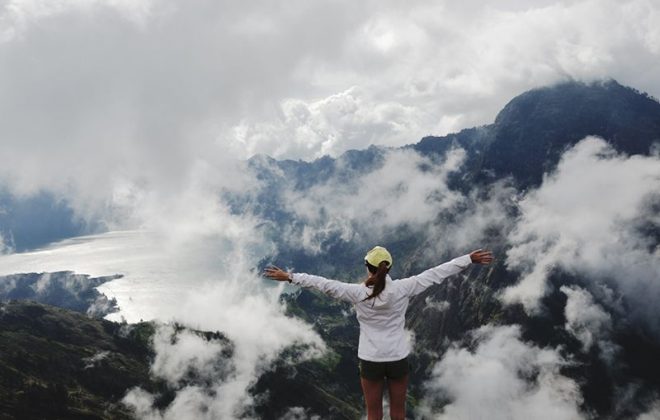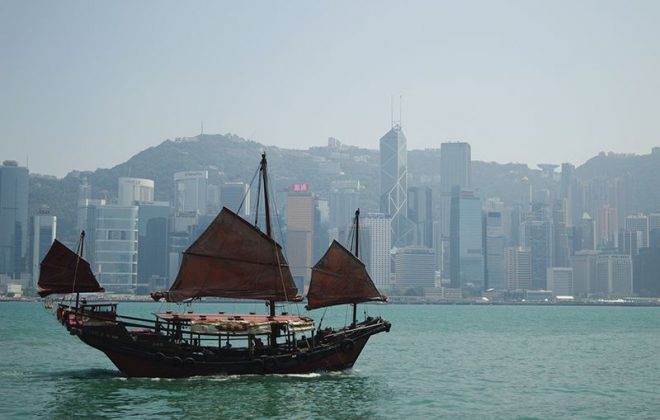Overnight Kayak Marathon – My ‘Spectacular’ Debut In Adventure Racing
Some time ago together with my teammates from kayak club we decided to take part in an adventure race called Salacas Mauciens. It’s an overnight kayak marathon that takes place in my home country of Latvia.
It was my first ultra endurance event and showed me in full color what the words persevere and not give up really mean.
The roller coaster of challenges & emotions we went through that night sparked an interest in endurance sports for me. Over the years testing physical and mental limits developed into somewhat of a hobby for me. And after writing this post I think I know when it started.
What was originally intended as a fun adventure with friends turned out to be one of the most transformative experiences of my life. That night I learned that adventure racing – much like life – is all about the journey. Not the destination.
It’s not what you achieve, but rather who you become as a result of it.
Overnight kayak marathon
Roughly translated from Latvian Salacas Mauciens means hammering down the Salaca river. And it’s exactly as crazy as it sounds.
The idea behind this overnight kayak marathon is simple. You start in the evening as the sun sets. Then kayak nearly 100 kilometers in complete darkness down the narrow & winding Salaca river full of rocks & rapids. The finish is next morning just before entering the open sea. Sounds like a fun adventure race, right?
The only rule is that you can’t do it alone. Everyone has to have a partner – be it a team of two in a two-person boat or two people in two single boats.
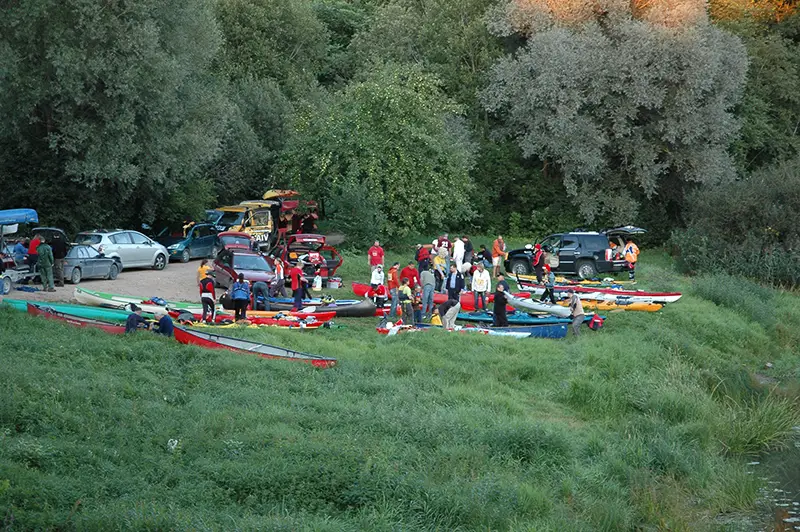
We were 4 people in total, which makes two teams of 2. One team (myself and my teammate Endijs) in a double-person boat and the other team in singles.
Preparation & the lead up
Salacas Mauciens took place on the evening of our final competition of the season. So, instead of going home after 2 days of racing and enjoying the off-season, we went to the supermarket to buy provisions for the race and were on our way to the start.
It wouldn’t be far from the truth if I said we were under-prepared. Besides agreeing on which boats we’d use we put little thought into how we would actually do it.
Usually people use sea kayaks for these kind of adventure races. However, as neither of us had the willingness to rent one and there were no strict requirement, we opted for old flatwater kayaks from our training club that nobody used anymore.
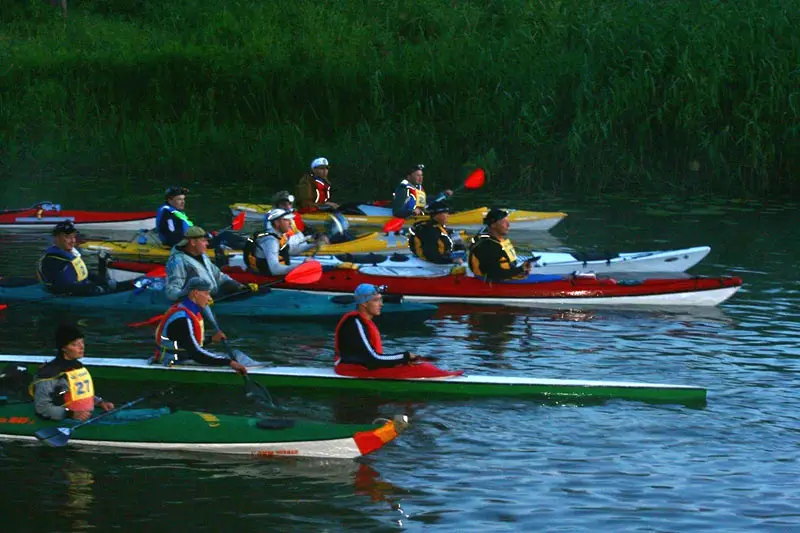
Even though we had no experience in racing longer than 1.5 hours, we expected that our aerobic base is sufficient to finish. So, our plan was to stick with heart rate Zone 2, treat it as a long training day and ‘just have fun’.
It was a good plan, but it always comes down to execution. In such a long race there are many variables and unknown things that can go wrong. We didn’t really plan for how we would deal with emergencies or external factors and thought that with our 10 years of kayaking experience we’ll figure it out as we go.
Now that I write this and think how ill-prepared we were, I’m surprised we even finished this adventure race. It was pure stubborness and unwilligness to give up that carried us through.
The overnight kayak marathon route – Salaca river
Talking about the course, Salaca is a river in northern part of Latvia. It begins in the lake Burtnieks and finishes in the Gulf of Riga.
The course was quite technical even for an experienced sea kayaker. The river is very narrow and winding with many turns. The current is quite strong. There are lots of whitewater rapids and underwater rocks that are hardly visible until you get very close to them. On top of that, for the major part of the course there was no place to dock, as all coasts are grown with grass.
We didn’t have a strategy how to best tackle the course. Our boats were not designed for rough waters, as they were very narrow and with a rudder sticking out from the bottom. So, we had to be very careful at technical parts of the course – especially with rapids and underwater rocks.
Yeah, easier said than done for two 19-year olds…
But enough with the introduction. Let’s get to the race itself.
A swift start – first 15K
The start of the race was at 21:00. Just as the late-August sun started to slowly set. For a summer evening it felt a bit chilly, so I put on one extra shirt to be on the safe side.
As the start signal rang we took a couple of harder strokes to get the boat moving. As our boat was much narrower than those around us, we got away very quickly – the strong current assisted us and it felt very easy. Our first adventure race was underway.
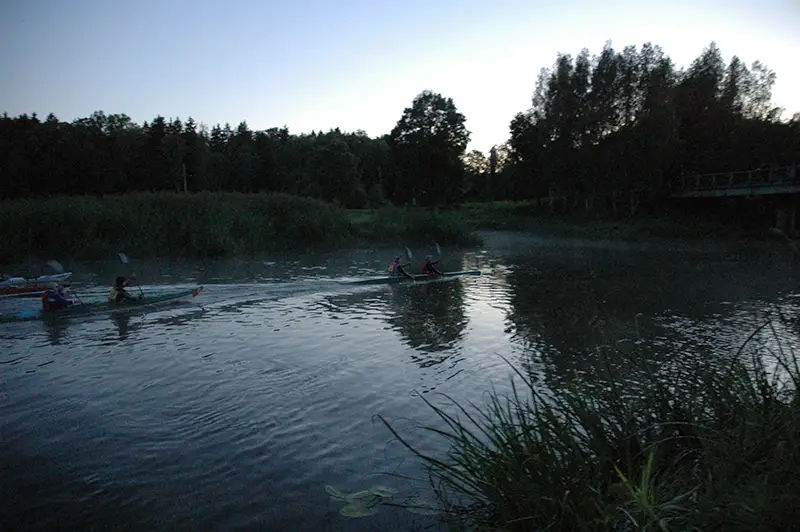
The first hour went by fairly quickly and it felt that we’ve made good progress. There was no way to tell, though, as neither of us had GPS on. It was not that popular back in 2009.
We talked about the competition we had over the last 2 days and how surprisingly good both of us felt despite that. Our spirits were very high.
However, as the darkness fell our problems began.
Problems begin – 15K to 25K
Even though it was August, the weather that day was not ideal for an overnight kayak marathon. None of the ‘variable’ factors were in our favor:
- It was a very dark night. There was no moon in the sky that would help illuminate the way. We had to rely only on the narrow beam of light from our the head torch. But, to be honest, when you point it at the water you don’t really see much anyway.
- The night was very cold. It was less than 10 degrees and as soon as you stop kayaking the body temperature start to drop. On top of that the fog coming from the warm water made the visibility even worse.
I was able to see only 2-3 meters ahead and with endless turns the river takes we frequently found ourselves too close to the shore. In such conditions it didn’t take us long to go over a couple of rocks that broke our rudder.
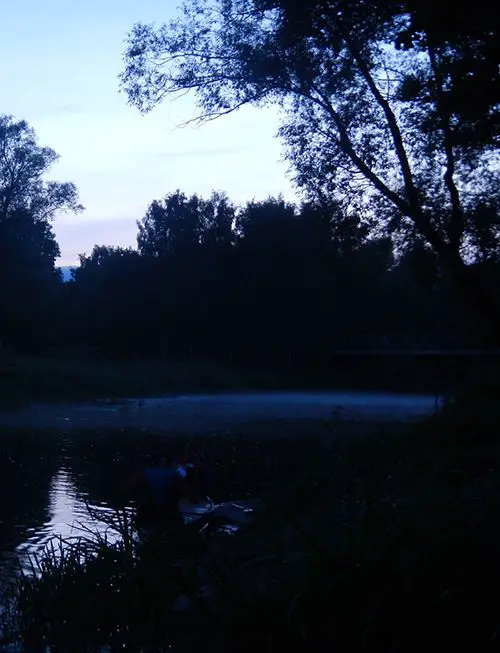
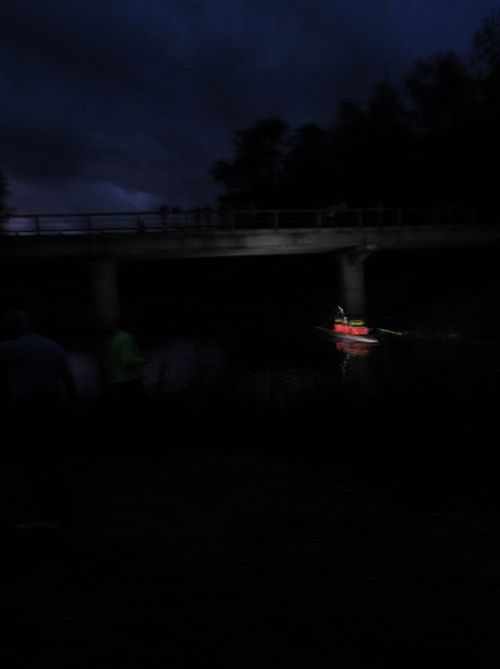
As soon as that happened, our boat wouldn’t go straight anymore. With every stroke it would gradually turn to the left, which forced us to re-adjust course every 5-10 strokes. That involved slowing down with the right side and paddling hard on the left.
We were going diagonally from one coast to another, which was super annoying and frustrating. We spent the next 20 minutes in such grind and couldn’t possibly imagine ourselves continuing like that for the next 75K.
Salaca river is pretty wild – the coast is grown with grass and there’s no place to come ashore. So, we stopped by a fallen tree to fix the situation.
Endijs got out on the fallen branch and immediately dropped chest-deep into the water getting totally soaked.
He did manage to push a small tree branch into the rudder which seemed to have fixed it in a neutral position. Not ideal, but at least we were going straight again.
A very cold night – 25K to 40K
Roughly an hour after fixing the rudder and getting back into the rhythm we decided it was time for a short break. We spotted an abandoned fishing boat and stopped to get out, eat a bit and stretch our legs & back.
A couple of minutes later when it was time to continue I started to develop hypothermia. My clothes were soaking wet from kayaking. Since those weren’t waterproof, my body temperature started to drop in the cold air. I pulled out the only dry jacket we had left and put it on. The rest of our clothes got wet during our ‘rudder-fixing attempt’.
That didn’t help much – I couldn’t stop my body from shaking. It was so bad that I couldn’t even grab the paddle or the side of the boat to get myself in. So, I started doing some arm circles to warm myself up. Then I tried to breathe warm air on my palms to get them to ‘work’. Nothing seemed to help.
Thoughts of calling for emergency and rescue went through my mind. But as I considered that option, our friends who were in the second team caught up with us and made fun of my miserable state. They didn’t have a better experience themselves – one of them fell out of the boat on one of the rapids and lost his seat and all nutrition.
In a weird way that small interaction motivated me to push through the cold & the shakes, take a mental leap and just get back into it. After a couple of minutes and few very awkward strokes we were moving again and soon I was somewhat warm again. Adventure racing at its best.

The Resilient Athlete
A Self-Coaching Guide to Next Level Performance in Sports & Life
Are you aiming to become a resilient athlete who is able to withstand any pressure? Be able to jump on any opportunity? Take any challenge life throws at you head on?
Then this book is for you.
Learn moreGrinding it out – 40K to 60K
Just over 30K was the furthest we’ve ever gone in training. At this point we were in an uncharted territory – both in terms of what our bodies can handle and what kind of obstacles lie ahead. But honestly, at 1AM in the morning we couldn’t care less.
The rudder seemed to be holding well and our boat was going somewhat straight. Muesli bar and some water helped to warm the body back up and maintain a decent pace.
At around 50K we had to transition some 100 meters on land and over the hill to get around a large dam. In our sleep-deprived state we almost kayaked past the exit marked by a dimly-lit light. Luckily there was another person in front of us that called and drew our attention.
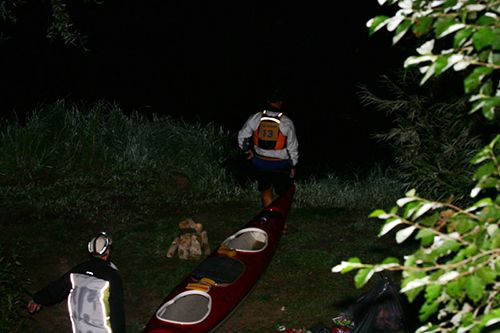
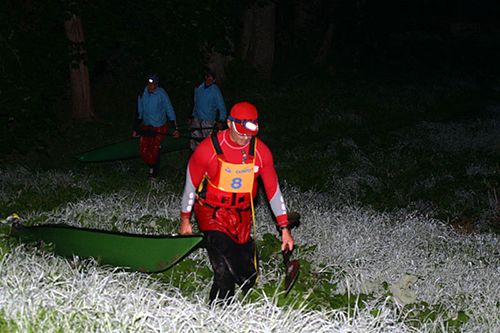
Once we transitioned, though, the river got much wider and it became easier to navigate (at least for a while). We seemed to have found our rhythm again and soon overtook our friends who went past us during our ‘down point’ an hour ago.
Everything was going smooth for a change. In fact, so smooth that I started to forget where we are and what we were doing. Sleep deprivation from the past couple of days and fatigue started to kick in.
I felt as if I blacked out. Where did the last hour go? Are we still ok? After 2 nights of minimum sleep leading up to this adventure I seemed to have figured out a way how to sleep on the go.
Right, left, right, left – take a look around and the only thing you can see is a concentrated beam of light on a tree or on a rock. Everything was the same and got so automatic that I couldn’t tell if 15 minutes have passed or a full hour.
The accident – 60K to 70K
It didn’t take long for the nature to remind us to be vigilant.
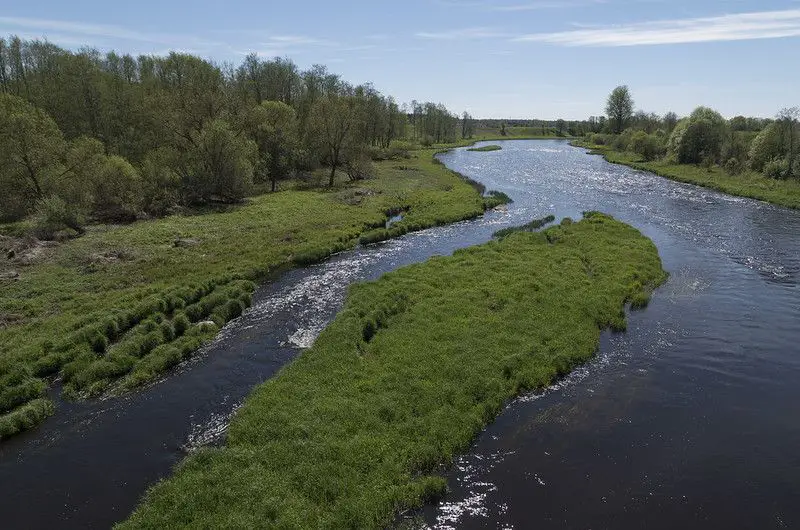
The last third of the course passes through a national park where the river gets narrow again and has many whitewater rapids. There was one particular section where a rapid was across the whole river and in the dark I couldn’t spot a clear route through.
We ended up stuck on one of the rocks so tight that I couldn’t push ourselves free.
We spent minutes trying to break free with no success – the boat was stuck tight. In a desperate attempt to get ourselves moving I gave my paddle to Endijs, stood up on a rock nearby and lifted the front of the boat to push us on a clear path.
The current was very strong. As soon as I pushed the boat the water rushed in, tilting it to one side and pushing it away. I managed to jump back in at the last moment and we were moving again.
However, as I turned to Endijs to get my paddle back, he was only carrying his. Turns out once the water rushed in he barely held on to stay in the boat and my paddle was taken downstream by the current.
We couldn’t spot it anywhere around us, even though the morning twilight provided more visibility. The current was pushing us away quickly, so there was not much we could do.
The accident also broke our rudder again. So, for the next half an hour we tried to kayak and steer with just one paddle which turned out to be even worse than earlier.
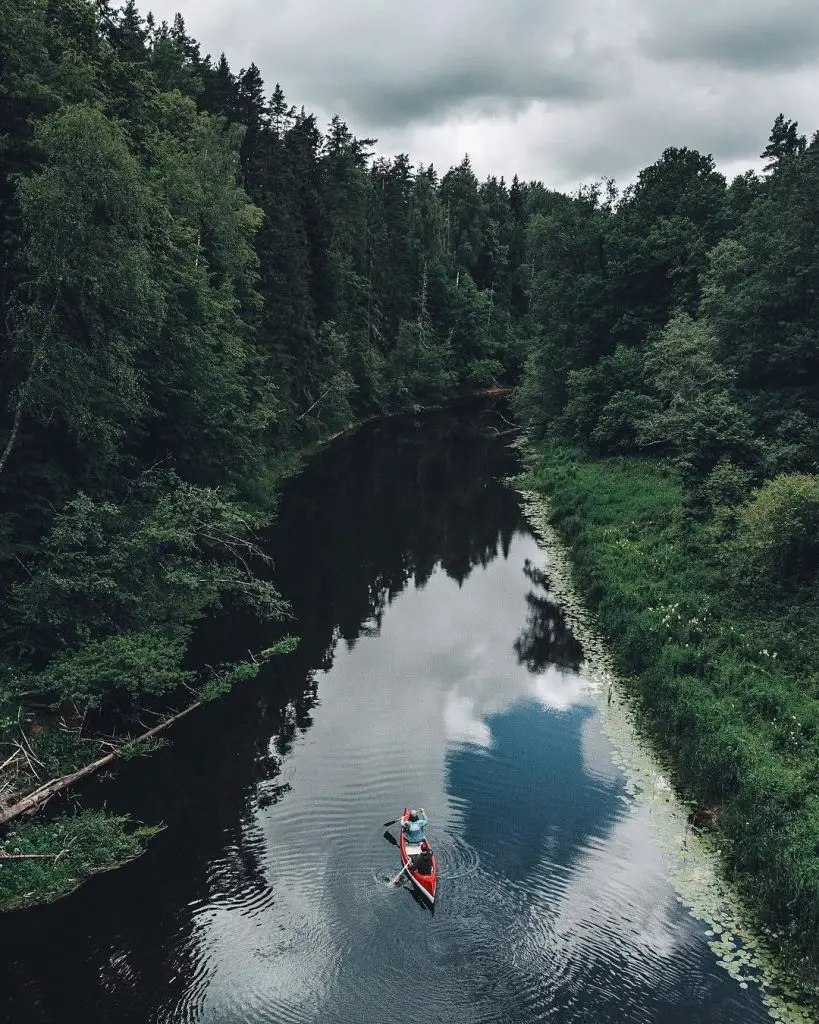
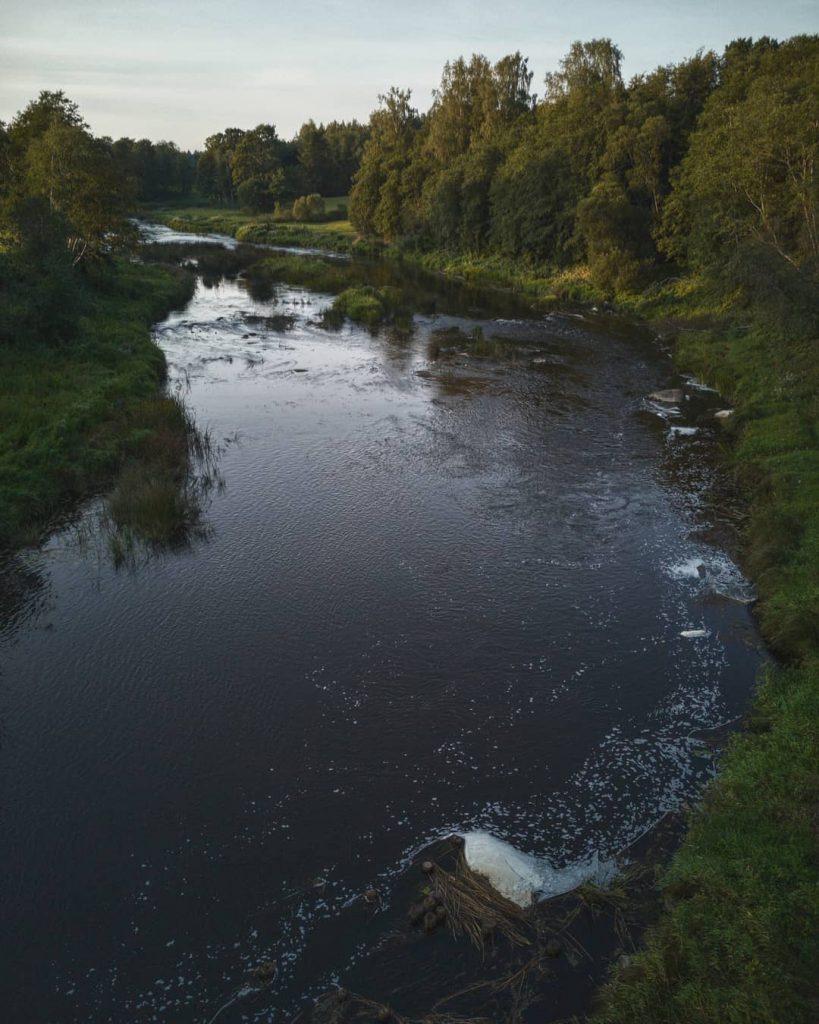
Looong way home – the last 30K
Eventually we passed a camping spot where we were able to get out, fix the rudder and gather our thoughts. Luckily for us, 15 or so minutes later the leading canoe team passed by and gave us one of their reserve paddles. Bless those guys – I don’t know how we would have covered the last 30K otherwise.
Throughout the race we thought once it gets bright it will get easier. After all, the largest part will be covered, we’ll be able to see where we’re going and it’ll get warmer. To be honest, those last 2-3 hours were mentally harder than all of the setbacks that took place that night. Combined.
That reserve paddle the canoe team gave us was one-sided. That meant one of us would have to ‘kayak’ only on one side at a time. We took turns and switched between canoe and kayak paddles every 10-15 minutes to keep ourselves entertained and utilize our last drops of energy as efficiently as possible.
We were both sleep-deprived. Cranky, struggling with motivation, our brains were foggy and we had hard time carrying out a conversation. During the last hour of the race we mostly kept silent – both of us dug very deep trying to find a reason to continue.
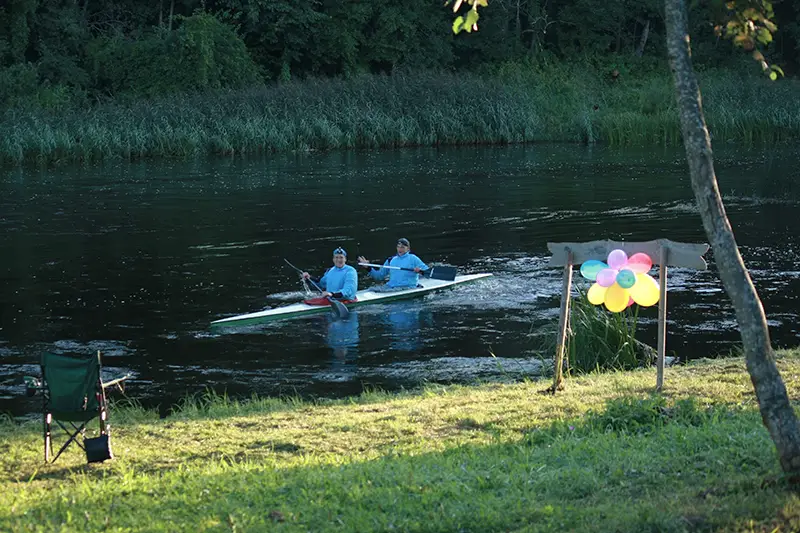
By the time we reached the finish we were completely exhausted and had no energy left. It was a challenge to just lift our arms and take a stroke.
What did I learn from an overnight kayak marathon?
Our finish time was 10 hours 15 minutes, but we’ve let go of any time or place goals many hours ago. As we stepped out of the boat we were more than happy to hear we finished 4th overall in our first adventure race.
That’s 1.5 hours behind the winners and roughly 2 hours slower than we expected.
At the time our result didn’t really matter – all we wanted was to eat & sleep. Now that I look back at it years later I see that it was the experience and not the result that made an impact on me. This adventure has tested me, but hasn’t broken me. It pushed me much closer to the edge than I’ve ever been. It has taught me the value of teamwork, perseverance and – most importantly – not giving up.
If you want something you never had, you should be ready to do something you never did.
I found that life is always like that – we only learn and grow when we are pushed beyond our comfort level. No matter how tough it is, it’s important to always move forward. Slowly, step by step. But never stop.
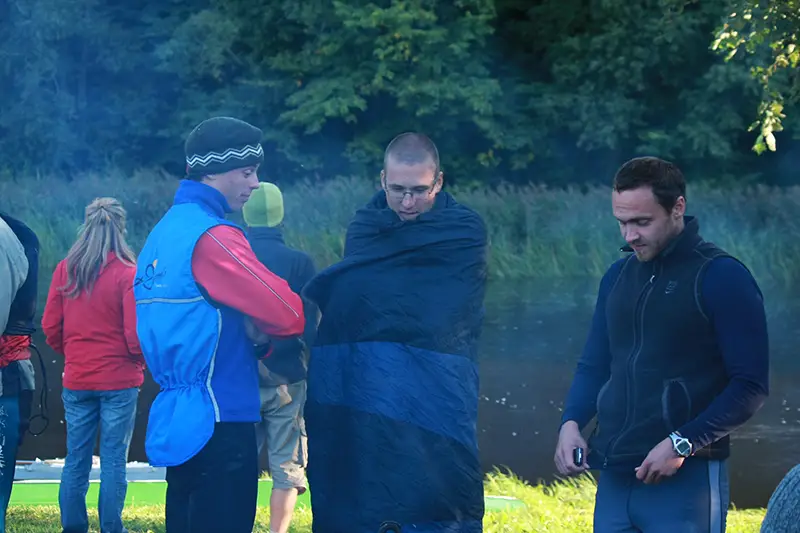
I think we made every mistake possible in this adventure race – from preparation to nutrition & execution. It’s interesting to look back at this experience now and see what did I learn about myself from it and what would I do differently.
#1 Select the right equipment
In such a long race you depend on the equipment you use to get yourself to the finish line. If it doesn’t work it’s almost game over.
We learned it the hard way when we broke our rudder (twice) and lost the paddle. It’s those emergency moments when you realize how much value equipment actually carries.
Besides the boat, for me personally clothing was a piece of equipment I should have paid more attention to. Had I used a softshell jacket to minimize wind and water splashes I wouldn’t develop hypothermia and in general would feel much more comfortable.
#2 Gather a team you trust and never doubt your choice
I experienced it first hand that teamwork is much more than simply doing something together. It’s about supporting and trusting each other to maximize your chances as a group. Not only get something for yourself.
In harsh conditions you depend on decisions and actions of partner. And I had the best teammate you can possibly ask for that. Sure, we both made some bad calls along the way. But we always looked at things from the perspective of what should we do instead of what I want.
#3 Plan your hydration and nutrition
We didn’t have much experience with nutrition. On our long training days in autumn (around 2.5 hours) we would usually make a 2-3 minute stop halfway to eat something. It was nothing big – just a slice of bread with a sip of hot sweet tea.
So, we figured that’s how we should fuel our race. We got bananas and some sugary muesli bars with the idea to eat something every hour or so. That was waaay not enough nutrition and I still remember how good a muesli bar tasted on an empty stomach as we were figuring out what to do at 60K.
For my first Ironman I planned around 50-60 grams of carbs per hour, which was 5 times more nutrition.
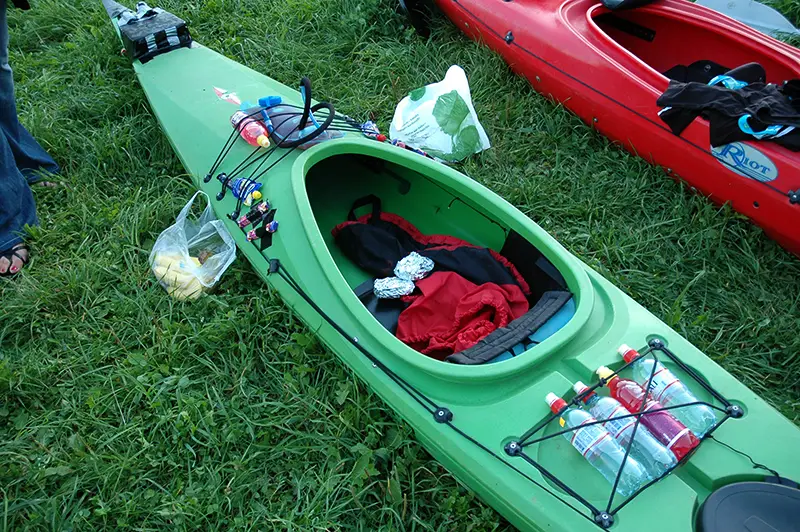
We vastly underestimated nutrition we’d need (both the type & the amount). As a result, for the last 3 hours of the race we didn’t really consume anything besides water.
For hydration we took plain water with us which was also not optimal. I lost a lot of electrolytes through sweat which I didn’t replenish – that was what caused hypothermia. It’s good that there’s not much vibration in kayaking, otherwise I’d risk developing muscle cramps as well.
#4 Review the course and have a race strategy
Adventure racing is very strategical. Poor preparation & execution will not allow the athlete to use his abilities to the maximum.
In preparation for an adventure race it’s a good idea to try and think about what could possibly go wrong. What are the external factors and what kind of impact those might have. This will help to decide what to pack – clothes, medicine, etc. Sure, a lot comes with experience, but a lot can also be picked up from doing the research.
In our case we could have been better prepared for a cold night or at least reviewed the course to figure out what to expect.
It also helps to create a plan in your head on how to deal with emergencies, so that if something happens you’re ready for it.
#5 Physical preparation is not everything
Having the long distance training & racing experience now, I would say intensity-wise it was comparable to an Ironman triathlon.
This overnight kayak marathon was more a mental experience than it was a physical one. We were fit enough to even win it, but way under-prepared strategically, mentally and emotionally.
It’s all in the head. Your body is capable of more than you think.
You go to dark places during such long race. And having the impact of external factors only amplifies that. There’s a lot of doubt and negative thinking circulating in your head, so it’s important to be mentally strong to quiet down those thoughts and focus on doing your best.
Did you find this information useful? Share the post with others using the buttons below.
Have an opinion? Share via links below and tag @theathleteblog
Tags In
Andrejs
GET A FREE TRAINING PLAN
Subscribe to my email list and get access to a free 4-week “back in shape” training plan
You’ll also get two full-body strength sessions and some other goodies!

How did I get here?
Hey there! My name is Andrejs and I am here to inspire, entertain and get you fit for any adventure.
I went from being an over trained pro athlete to an endurance coach sharing how to listen to your body and live life to the fullest.
Traveling, new sports & activities brought new meaning to my training and made it much more effective, fun and enjoyable. And I'm here to help you do the same.
